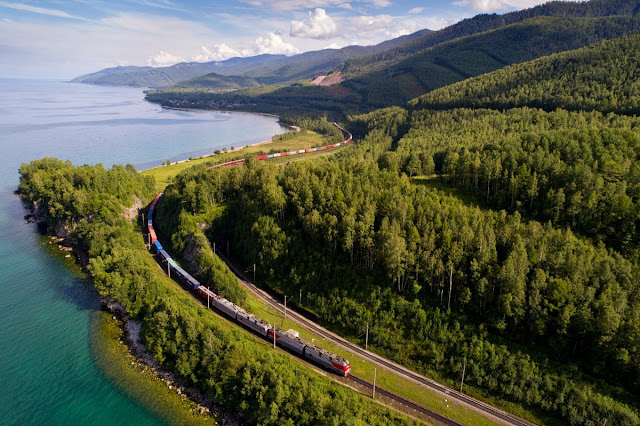петак, 22. април 2022.
Salar de Uyuni, Bolivia
Salar de Uyuni is part of the Altiplano of Bolivia in South America. The Altiplano is a high plateau, which was formed during the uplift of the Andes mountains.
The plateau includes fresh and saltwater lakes as well as salt flats and is surrounded by mountains with no drainage outlets.
The geological history of the Salar is associated with a sequential transformation between several vast lakes.
Some 30,000 to 42,000 years ago, the area was part of a giant prehistoric lake, Lake Minchin.
Its age was estimated from radiocarbon dating of shells from outcropping sediments and carbonate reefs and varies between reported studies.
Lake Minchin (named after Juan B. Minchin of Oruro) later transformed into paleolake Tauca having a maximal depth of 140 meters (460 ft), and an estimated age of 13,000 to 18,000 or 14,900 to 26,100 years, depending on the source.
The youngest prehistoric lake was Coipasa, which was radiocarbon dated to 11,500 to 13,400 years ago.
When it dried, it left behind two modern lakes, Poopó Lake and Uru Uru Lake, and two major salt deserts, Salar de Coipasa and the larger Salar de Uyuni.
Salar de Uyuni spreads over 10,582 square kilometres (4,086 sq mi), which is roughly 100 times the size of the Bonneville Salt Flats in the United States.
Lake Poopó is a neighbour of the much larger Lake Titicaca. During the wet season, Titicaca overflows and discharges into Poopó, which, in turn, floods Salar De Coipasa and Salar de Uyuni.
Lacustrine mud that is interbedded with salt and saturated with brine underlies the surface of Salar de Uyuni.
The brine is a saturated solution of sodium chloride, lithium chloride and magnesium chloride in water.
It is covered with a solid salt crust varying in thickness between tens of centimetres and a few meters.
The center of the Salar contains a few "islands", the remains of the tops of ancient volcanoes submerged during the era of Lake Minchin.
They include unusual and fragile coral-like structures and deposits that often consist of fossils and algae.
The Door To Hell, Turkmenistan ☺
The "Door to Hell" or ''Gates of Hell" is a natural gas field in Derweze, Turkmenistan, that collapsed into an underground cavern, becoming a Natural Gas crater.
The gas crater is located near the village of Derweze, also known as Darvaza.
It is in the middle of the Karakum Desert, about 260 kilometres (160 mi) north of Ashgabat, the capital of Turkmenistan.
The gas reserve found here is one of the largest in the World.
The name "Door to Hell" was given to the field by the locals, referring to the fire, boiling mud, and orange flames in the large crater, which has a diameter of 70 metres (230 ft).
The hot spots cover an area 60 metres (200 ft) wide and about 20 metres (66 ft) deep.
Soviet scientists identified the site in 1971. It was thought to be a substantial oil field site.
The scientists set up a drilling rig and camp nearby and started drilling operations to assess the quantity of gas reserves available at the site.
As the Soviets were pleased with finding the gas resources, they started storing the gas.
The ground beneath the drilling rig and camp collapsed into a wide crater and disappeared.
No lives were lost in the incident.
However, large quantities of methane gas were released, creating an Environmental problem and posing a potential danger to the people of the nearby villages.
Fearing the release of further poisonous gases from the cavern, the scientists decided to burn it off.
They thought that it would be safer to burn it than to extract it from underground through expensive methods.
Environmentally, gas firing is the next best solution when the circumstances are such that it cannot be extracted for use.
At that time, expectations were that the gas would burn within days, but it is still burning, more than four decades after it was set on fire.





.jpg)


















.jpg)
















